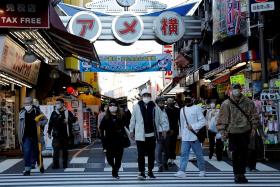Asean must build a ‘thinkforce’
Regional grouping needs to become an innovation centre and equip its people to compete in the digital economy
As Asean opens its 51st year, leaders face a major question: How to maintain the growth and rising standards of living enjoyed in Asean's first 50 years.
The advantage of low labour costs is being eroded by technological advances such as machine learning, 3D printing, big data analytics, and connectivity between humans and machines.
For Asean to realise its vision of shared prosperity, it needs to boost its innovative industries.
EDUCATION
The transformation from workforce to thinkforce starts with education. Asean needs to continue to improve its compulsory education (up to 15 years old).
In the Organisation for Economic Co-operation and Development's (OECD) Programme for International Student Assessment, Vietnam was No. 8 in science and Singapore was No. 1 across science, reading and mathematics. Thailand and Indonesia were below the OECD average in all three areas, and other Asean countries were not covered.
The future challenges extend to higher education. In terms of researchers per million of population, Singapore ranks No. 6 worldwide, Malaysia No. 37, while Indonesia, the Philippines, Thailand and Vietnam rank below 50.
Education in science and mathematics is important to build skills that allow people to interface with, and improve, the functions of machines.
FINANCE
While Asean's savings rates are generally high, most savings remain in cash, bank deposits or property. Capital markets (stocks, bonds and money markets) are critical to channel national savings into long-term productive investments.
These include physical infrastructure (such as transport and communications), social infrastructure (such as schools and hospitals), and funds to grow business and industry, including new ventures.
Long-term planning from the government and concerted, multi-year efforts from both private and public stakeholders are required to speed up capital markets development.
INFRASTRUCTURE
Strengthening intra-region infrastructure and interconnectivity will lower production costs, create a larger market, and encourage inward investments in supply chains. This includes not only ports, rail, roads and power but also telecommunications and data.
In 2016, only 40 per cent of Asean's population had Internet access.
Strengthening interconnectivity in Asean is not just about infrastructure. It also requires increasing commitment to remove trade barriers and frictions. Doing so is estimated to increase gross domestic product by 9.3 per cent.
TECHNOLOGY
Innovation and the digital economy are driven by research and technological breakthroughs. However, Asean's gross expenditure on research and development as a percentage of GDP is low.
Asean has the drive and the pools of talent to be a global centre for innovation. To realise that goal, the region must continue to strengthen policies to encourage new investment, whether domestically or by foreign companies.
Asean made exceptional progress in its first 50 years, but it must become an innovation centre and equip its people as a thinkforce to compete effectively in the digital economy.
The writer is chairman of the EU-Asean Business Council. This article appeared in The Business Times last Friday.
Get The New Paper on your phone with the free TNP app. Download from the Apple App Store or Google Play Store now


